Introduction
The rapid advancement of drone and unmanned aerial vehicle (UAV) technology is transforming airspace management, commercial operations, and regulatory frameworks across the Gulf Cooperation Council (GCC) region. Nowhere is this transformation more evident than under the Saudi Civil Aviation Law, which recently underwent significant reforms. For UAE-based businesses, executives, HR managers, and legal practitioners operating across borders—or considering expansion into Saudi Arabia—understanding these regulatory standards is not just prudent, but an operational necessity.
Why does this matter for UAE stakeholders? First, cross-border engagements in logistics, surveying, security, and tech deployment mean compliance risks regularly cross into multiple jurisdictions. Second, the closely knit trade and regulatory alignment between UAE and Saudi Arabia increases the impact of legislative developments in one country upon the other, especially as both states pursue ambitious innovation strategies under their respective Vision 2030 frameworks. Finally, as Saudi Arabia’s General Authority of Civil Aviation (GACA) tightens rules to ensure safety, privacy, and national security, transgressions invite severe penalties and reputational harm for non-compliant organizations.
This consultancy-grade analysis provides authoritative insights into the Saudi Civil Aviation Law’s approach to drone and UAV regulation, with practical recommendations on compliance, risk mitigation, and strategic alignment for UAE businesses. All guidance in this article is based on primary legal sources—particularly GACA regulations, recent ministerial edicts, and the evolving regulatory landscape as documented by official Saudi and UAE portals.
Table of Contents
- Legal Overview of Saudi Drone and UAV Regulation
- Key Provisions of the Saudi Civil Aviation Law on Drone Operations
- Recent Updates and Amendments: 2022–2025
- Compliance Requirements for UAE and Cross-Border Businesses
- Enforcement and Penalties: Risks of Non-Compliance
- Comparative Analysis: Saudi and UAE Drone Regulations
- Practical Insights and Best Practices for Legal Compliance
- Case Studies: Compliance Challenges and Solutions
- Conclusion and Forward-Looking Strategies
Legal Overview of Saudi Drone and UAV Regulation
Evolution of the Legal Framework
Saudi Arabia’s regulatory landscape on drones and UAVs is governed by the Civil Aviation Law as set forth by Royal Decree No. M/44 (20 Rajab 1426H, corresponding to 25 August 2005) and further detailed by resolutions of the General Authority of Civil Aviation (GACA). This has been supplemented by specific regulations, guidelines, and circulars—most notably, the GACA Regulations on Remotely Piloted Aircraft Systems (RPAS) issued in 2020, updated in 2024. The overarching aim: to safely integrate UAVs into the national airspace while balancing innovation, privacy, and security.
Regulatory Bodies
GACA is the central authority overseeing civil aviation compliance in Saudi Arabia. All matters concerning drone licensing, airspace management, operator registration, technical certification, and enforcement fall under its purview.
Key Provisions of the Saudi Civil Aviation Law on Drone Operations
Licensing and Registration
Operators—companies or individuals—must obtain explicit UAV operator permits from GACA. This requirement applies regardless of craft weight, but differs depending on intended use (commercial, governmental, or recreational). Application prerequisites include:
- Submission of technical specifications and intended flight plans
- Validation of remote pilot credentials and training certifications
- Demonstration of insurance coverage (mandatory for commercial use)
- Proof of equipment compliance (radio frequency utilization, failsafe mechanisms)
Operational Restrictions and Airspace Controls
Flight without pre-approval and outside designated airspace corridors is strictly prohibited. Drones must not be flown:
- Over populated or sensitive areas—including royal palaces, diplomatic premises, and government facilities
- In proximity to airports, military installations, or national infrastructure zones
- At altitudes exceeding 120 meters without special permission
Data Protection and Privacy
Any form of aerial data capture is subject to compliance with Saudi laws on privacy, data protection, and cybercrime. Unauthorised surveillance or photography may result in severe criminal liability—including imprisonment and financial penalties. Operators must implement secure data storage and encrypted transmissions for any imagery or sensor data collected.
Insurance and Liability
Commercial operators are statutorily required to maintain liability insurance covering third-party bodily injury and property damage. The minimum coverage threshold is set by periodic GACA directives, typically reviewed every two years. Failure to provide proof of insurance results in immediate revocation of operating permissions.
Recent Updates and Amendments: 2022–2025
Impact of GACA Circular 94/2022 and Subsequent Guidance
With GACA Circular 94/2022, and amendments in 2024, several pivotal changes were introduced:
- Introduction of a unified online permit portal for foreign UAV operators and multinational entities
- Mandated RFID tagging and geo-fencing requirements for all drones above 250 grams
- Enhanced background checks and psychometric evaluations for remote pilots
- Expansion of no-fly zones—now incorporating new economic and data zones as designated by the National Cybersecurity Authority
| Provision | Pre-2022 | 2024 Update |
|---|---|---|
| Permit Structure | Paper-based, individual per drone | Digital, unified per operator |
| Mandatory RFID/Geo-fencing | Not required | Required for all drones >250g |
| Pilot Requirements | Basic ID verification | Comprehensive vetting, psychometrics |
| Insurance Minimums | Unspecified | Explicit, reviewed biennially |
Visual Suggestion: Insert a flow diagram summarising the updated permit application process, highlighting enhanced checks and digital workflows.
Compliance Requirements for UAE and Cross-Border Businesses
Who Must Comply?
Any UAE-headquartered or UAE-licensed enterprise operating drones within Saudi territory—regardless of where the UAV was initially registered—must secure GACA approval and adhere to Saudi standards. This includes:
- Logistics providers (fulfilment, last-mile delivery)
- Surveying, mapping, and construction firms
- Media, film, and real estate companies performing aerial shoots
- Security and critical infrastructure service providers
Multi-jurisdictional operators should integrate compliance audits into their internal governance processes and appoint a responsible person (as per GACA guidance) to liaise with Saudi authorities.
Permit and Documentation Checklist
| Requirement | Details |
|---|---|
| Operator Permit | GACA-issued, valid for specified period |
| Remote Pilot License | Verified and periodically renewed |
| Insurance Cover Note | Updated and compliant with minimum requirements |
| Data Handling Policy | Demonstrates privacy and cybersecurity compliance |
| Incident Reporting Procedure | Documented process for all flight irregularities |
Consultancy Insight
Failure to synchronise Saudi and UAE compliance efforts often results in delayed clearances, impounded equipment, or lasting reputational harm. Establish a centralised compliance dashboard accessible to legal and operational teams in both jurisdictions. This ensures that data, incident reports, and insurance documents are current and readily retrievable during inspections.
Enforcement and Penalties: Risks of Non-Compliance
Administrative Sanctions
- Immediate grounding and confiscation of UAVs
- Suspension or permanent revocation of operator permits
- Blacklisting of operators on GACA’s public registry
Financial Penalties
Fines for unauthorized or non-compliant flights can exceed SAR 100,000 per infraction (GACA penalty schedule, effective January 2024), with corporate repeat offenders facing multipliers up to tenfold. Breach of critical no-fly zones or privacy offenses may trigger criminal liability—including imprisonment for up to five years under relevant Anti-Cybercrime Laws.
Visual Suggestion
Incorporate a table contrasting administrative vs. criminal penalties, with a side-by-side checklist for real-time evaluation by compliance teams.
Comparative Analysis: Saudi and UAE Drone Regulations
| Aspect | Saudi Arabia | UAE |
|---|---|---|
| Permit Authority | GACA | General Civil Aviation Authority (GCAA) |
| Online Permit System | Unified (2024 update) | MyDroneHub App, GCAA Portal |
| Drone Registration | Mandatory, digital | Mandatory, digital |
| Insurance | Mandatory, defined minimums | Mandatory, defined minimums, periodic review |
| No-Fly Zones | Extensive, with economic/data zones | Extensive, city- and infrastructure-specific |
| Penalties | SAR 100,000+, criminal liability | AED 20,000–200,000, criminal liability |
Consultancy Note: UAE operators are likely to see tighter regional interoperability in regulatory frameworks—a trend anticipated in the UAE Law 2025 updates and the ongoing harmonisation efforts under the Gulf Cooperation Council Aviation Safety Roadmap.
Practical Insights and Best Practices for Legal Compliance
Develop a Cross-Border Compliance Protocol
Organizations should formulate a cross-border UAV compliance protocol that:
- Synchronises permit acquisitions across UAE and Saudi agencies
- Standardises remote pilot vetting and certification
- Closely tracks regulatory updates using official government portals
- Implements data privacy controls in alignment with both jurisdictions’ cyber and data protection statutes
Adopt a Compliance Technology Solution
Investing in digital compliance platforms—such as unified dashboards integrating MyDroneHub (UAE) and GACA interfaces—can streamline documentation and reduce the risk of human error.
Regular Staff Training
Arrange recurrent training and legal update briefings for pilots, compliance teams, and business unit leads to foster a compliance-oriented organizational culture.
Case Studies: Compliance Challenges and Solutions
Case Study 1: Logistics Provider Overlooks No-Fly Zone
A UAE logistics firm attempted an autonomous delivery across the Saudi border using UAVs pre-cleared by UAE GCAA authorities. Unaware of newly expanded Saudi economic/data zone restrictions announced via GACA Circular 94/2022, the operator faced impoundment of assets and SAR 100,000 in penalties. Outcome: The business developed a real-time regulatory update monitoring system and now cross-checks all flight plans for local compliance before launch.
Case Study 2: Data Privacy Violation During Survey
An Emirati construction consultancy conducting aerial surveys captured imagery above a Saudi government facility. Despite holding valid flight permits, failure to secure data privacy clearance resulted in regulatory sanctions. Outcome: Adoption of a dual-check system where all drone missions are cross-referenced against both Saudi and UAE privacy rules, with encrypted live data streams and secure storage.
Case Study 3: Successful Compliance Integration
A real estate company established a centralized legal-compliance team responsible for UAV operations across the GCC. By aligning all procedures with the strictest applicable jurisdiction (Saudi), it avoided delays, legal interruptions, and ensured seamless project delivery, gaining a strategic reputational advantage.
Conclusion and Forward-Looking Strategies
The legal landscape for drones and UAVs in Saudi Arabia is evolving rapidly, reflecting both the opportunities and regulatory risks for UAE-based enterprises. The latest GACA updates—emphasising digital workflows, enhanced security, and data governance—promise to shape not only airspace management but also set new compliance standards for the region. For UAE stakeholders, a proactive approach—rooted in cross-border legal harmonisation, technology integration, and ongoing staff education—is vital to mitigate risk, protect reputation, and fully leverage the growth potential of UAV applications. Looking ahead, with further updates expected from the UAE Law 2025 and anticipated Gulf-wide harmonisation, staying ahead of the compliance curve will distinguish market leaders from laggards. Legal teams, C-suites, and HR managers must prioritise regulatory intelligence, multi-jurisdictional compliance, and strategic investment in legal technology to ensure resilient, future-proof operations.
Visual Suggestion: Place a compliance process flowchart illustrating key steps and decision points for cross-border UAV deployment under current Saudi Civil Aviation Law and expected UAE 2025 updates.



